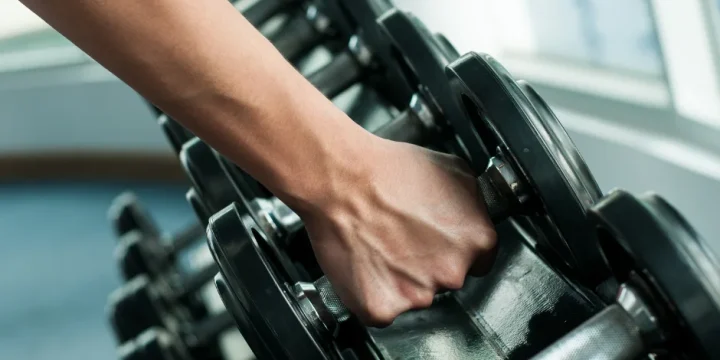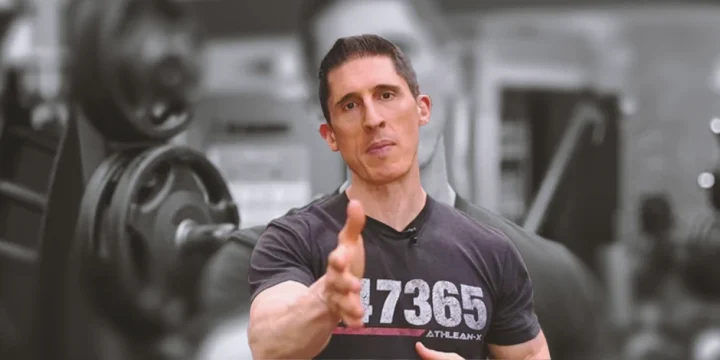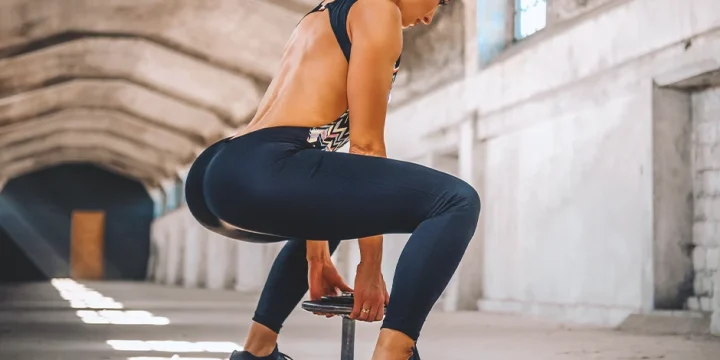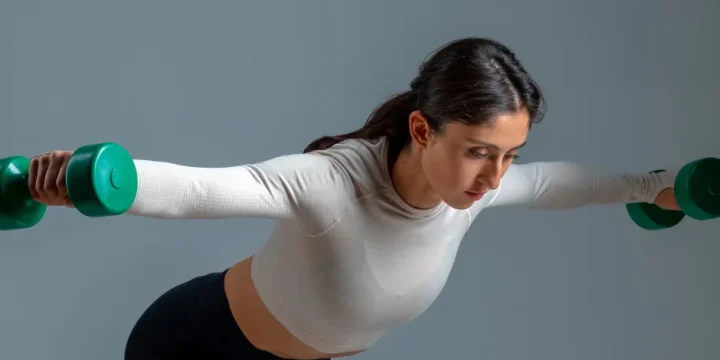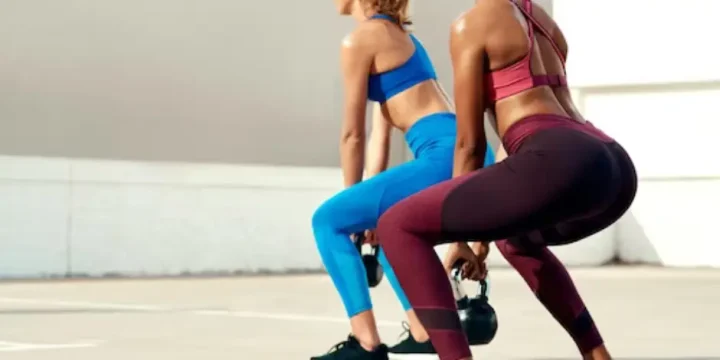A symmetrically formed upper body necessitates the development of big traps. You must isolate this area by performing workouts that engage these muscles' upper, middle, and lower regions.
As a professional fitness coach with over 9+ years of experience, I've guided many clients on exercising their traps for strength development and muscle mass building.
In this article, I will provide my expertise on how to train your traps for maximum gains.
Quick Summary
- Rack pulls, upright rows, snatch pulls, barbell shrugs and face pull workouts can help you get bigger traps
- Incorporate these best protein powder supplements to aid your recovery between repetitions and sets.
- According to anatomy studies in the National Library of Medicine, the upper traps raise the shoulder blades and rotate them upwards, the middle traps aid in retracting the shoulder blades while the lower traps rotate the shoulder inwards.
- From my years of coaching, I've found that integrating variety and proper technique in trap workouts is crucial for balanced and impressive muscle development.
Exercises for Bigger Traps

1. Rack Pulls
Rack pulls are excellent to work the traps, grip, and upper back.
In my experience, I've noticed that the effectiveness of rack pulls can vary based on anatomical differences. One of my clients, who had shorter arms, found a modified stance more effective, highlighting the importance of tailoring exercises to individual needs.
To perform trap-specific rack pulls, use a double overhead grip that is wider than shoulder width.
How to perform:
- Place a barbell on a power rack so it rests on spotter arms or a set of hooks an inch or two above knee height.
- Breathe deeply, tighten your core, drive your hips forward, and straighten your knees to raise the trap bar. As you stand up straight, maintain the bar close to the legs.
- Return to the starting position by controlling the descent.
- Repeat for the desired number of reps.
Also Read: How to Do a Rack Pull Properly
2. Upright Row
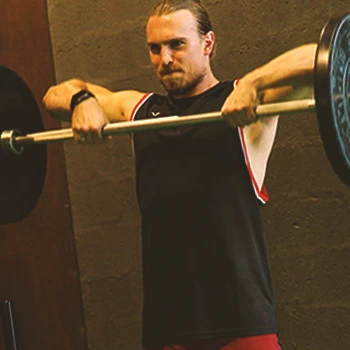
The barbell upright row is a great exercise for developing the upper traps and shoulders.
How to perform:
- Load a barbell with the desired weight and pose facing it with both feet shoulder-width apart.
- Grasp the barbell using an overhand grip (palms facing down) and arms slightly closer than shoulder-width apart.
- Take up the bar with your knees bent and your back straight.
- Lift the bar while keeping your back straight and your eyes forward, keeping it as near your torso as possible.
- Pause, then carefully lower the barbell back to the starting position.
- Repeat for the desired number of reps.
3. Snatch Pull
The snatch pull is a staple in my training programs, especially for clients aiming to build their upper and mid-back.
Like the clean pull, the snatch pull puts an even greater strain on the upper and mid-back. This exercise also offers a mental challenge, requiring focus and determination to master the technique.
The wider grip and horizontal position demand not only physical strength but also mental resilience and concentration.
How to perform:
- Position the barbell above your shoelaces, feet hip-width apart, and grasp the bar in a wide snatch grip.
- Maintain a diagonal back with shoulders over your hips and shoulders pushed together and backward with straight arms.
- Raise the barbell off the ground by pushing through the legs with the chest.
- The shoulders must be stacked above the barbell, and the chest and hips should rise together.
- Accelerate the weights with your feet toward a standing position upon clearing the knee, and then rapidly extend your hips and legs.
- Pull the elbows up and back while your ankles, knees, and hips propel you to a full extension when establishing hip contact. During the pull, keep your knuckles pointing down toward the ground.
- Pull the barbell up to the chest, but no higher.
4. Barbell Shrug
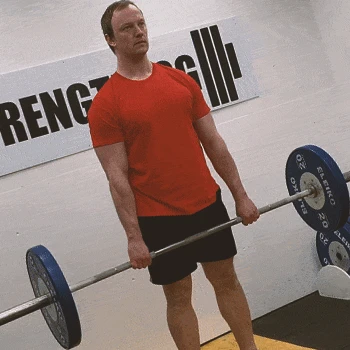
The barbell shrug is not only essential for increasing your upper back's size and strength but also plays a crucial role in injury prevention.
I remember working with a client who initially struggled with shoulder pain. We focused on proper shrug techniques, which not only alleviated his discomfort but also significantly improved his trap development.
How to perform:
- Begin by placing the bar and weight plates on the floor or a rack.
- Hold the barbell with an overhand grip slightly broader than shoulder width.
- Ensure the chest and the back are straight, then stand up straight by pushing through your heels.
- Maintain a modest bend forward at the hips while maintaining the shoulders in a neutral stance.
- Begin the action by raising your shoulders to your ears.
- Lower the bar carefully and deliberately.
- Repeat for the desired number of reps.
Also Read: 8 Best Barbell Back Exercises
"When you shrug, you must look at the floor. In principle, this allows you to operate the traps across a wider range of motion."
- Ebenezer Samuel, Certified Strength & Conditioning Specialist
5. Face Pull
The cable face pull is an excellent shoulder exercise for targeting the rear delt and traps.
How to perform:
- Connect a rope to the cable machine.
- Grab the rope and bring the load toward your face using both hands.
- Keep your upper arms parallel to the floor and the elbows higher than the wrists throughout the exercise.
- Return the rope to its starting position slowly.
- Repeat for reps.
Trap Muscle Anatomy

The traps are divided into three sections:
- Upper traps
- Lower traps
- Mid traps
Each part of the trap muscle has a specific role in the movement:
- The upper traps raise the shoulder blades and rotate them upwards, as per reports by the National Library of Medicine [1]. The upper traps elevate the scapula.
- The middle traps aid in retracting the shoulder blades (bringing them together), according to another report published by the Journal of Physical Therapy Science [2].
- According to studies by the National Library of Medicine, the lower traps descend (move down) and rotate the shoulder blades inwards [3].
This indicates that you must perform trap exercises that engage all three trapezius muscles to enhance trap growth.
While most lifting enthusiasts focus on the upper traps, training the mid and lower traps is critical for full shoulder health and function.
Trap Training Techniques

While a few of these are advanced, most lifters can do them.
Incorporate some or all of these into your existing trap training program to boost muscle activation, workout volume, and growth.
Eccentrics
Eccentric exercise has been demonstrated by Frontiers in Physiology to stimulate muscular development but is also associated with elevated levels of muscle injury, pain, and inflammation [4].
If you're up for a challenge, eccentric training will help you gain significant power and muscle growth. Personally, I've found them to be a game-changer for trap development for myself and my bodybuilding clients.
As a rule of thumb, you should slowly lower the loads under control, but you may lower the weights even slower to extend time under strain in the eccentric phase.
Lifting Straps
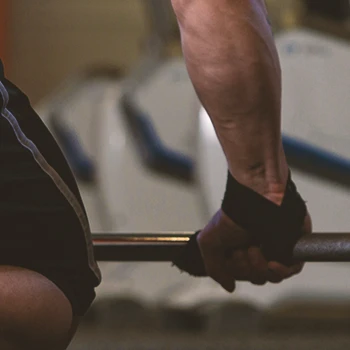
Lifting straps may be beneficial for developing stronger traps because the grip muscle groups are frequently a limiting issue.
Heavy loading and more significant repetitions are frequently required for trapezius muscle development.
Utilizing straps allows you to exercise harder and obtain a few extra repetitions each session without worrying about your grip failing.
Power Shrug Reps
While controlled full-range-of-motion reps are preferred, more experienced lifters can use "cheat," or power shrugs to squeeze a few more reps out of the session and stress the traps.
Power shrugs may also be transferred to snatch and cleans by athletes such as Olympic weightlifters.
Common Traps Training Mistakes

Over the years, I've seen both beginners and experts make certain trap training mistakes risked injuries, and reduce their trap growth potential.
Here are some of the mistakes I've noted:
Limiting the Range of Motion
One common error I've corrected in many of my clients is limiting the range of motion.
I always emphasize on training across an entire motion range to enhance trap development.
This means you may have to decrease the weights and focus on feeling the muscular contraction and stretch as you lower the weights (eccentric phase) and at the peak of the exercise (terminal elevation).
Rolling the Shoulders Forwards
Moving the shoulders forward (and then backward) on each repetition can put a lot of strain on the shoulder joint.
In my regular coaching sessions, I've noted that many people like to move their shoulders back and forth. This has little to no effect on the trapezius muscle and typically shifts the stress to the joint.
Protracting the Shoulders In Set Up

Protraction of the shoulders during the setup position is frequently caused by the lifter ensuring that the home gym trap bar is clear of the front of the hips.
If so, tilt your torso forward 10 degrees and return your shoulder blades to a neutral posture.
If you're protracted in your setup, your shoulders will typically drift forward as you ascend, resulting in the error mentioned above.
Utilizing Too Much Weight
You can lift many pounds with the traps, but there's a significant difference between employing heavy weights with a full motion range and controlled repetitions vs. ego-boosting shrugs.
Many lifters will overload the shrug to raise it; however, they may rather focus on a powerful contraction, a regulated eccentric phase, and a wide range of motion.
FAQs
How Many Reps for Big Traps?
The regular 8-12 reps are frequently insufficient to maintain the traps under stress long enough, so increase to 12-15, and even 15-20 rep range.
Do Traps Respond Better to High Reps?
Yes, traps respond better to high reps. Because the range of motion is limited, doing six to eight reps won't provide much time under strain. Traps, like calves and abs, have limited motion ranges and respond better to higher repetitions.
What Increases Traps?
Raising your arms, shrugging your shoulders, and other movements like face pulls and chin-ups increase your traps. Therefore exercising them to grow as strong as possible will benefit you in areas other than the massive back.
References:
- https://www.ncbi.nlm.nih.gov/books/NBK518994/
- https://www.ncbi.nlm.nih.gov/pmc/articles/PMC4905927/
- https://www.ncbi.nlm.nih.gov/pmc/articles/PMC7115121/
- https://www.frontiersin.org/articles/10.3389/fphys.2019.00536/full
About The Author
You May Also Like
